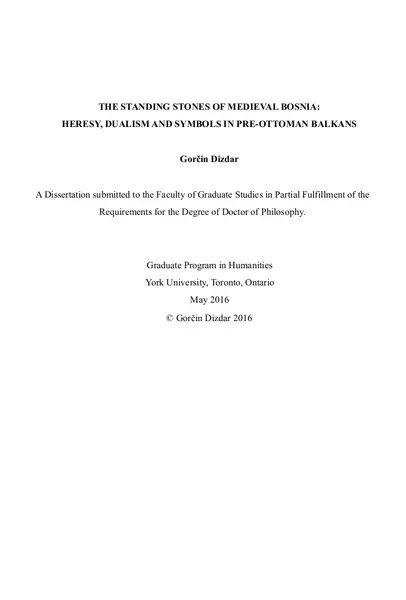
The Standing Stones of Medieval Bosnia.
Heresy, Dualism and Symbols in Pre-Ottoman Balkans
Dizdar G.
Год :2016 Количество страниц :363 Язык :Английский Категория :Богомилы /Книги Скачать : PdfПоддержать :
The aim of this dissertation is to interpret the enigmatic imagery of the stećak, the roughly 60,000 monumental, monolithic standing stones found on the territories of modern-day Bosnia and Herzegovina and its neighbouring regions. Around 30% of the stones are adorned with low reliefs depicting a variety of symbols such as crosses, crescents, rings and rosettes, as well as more complex figural compositions involving orantes, circle dances and stag hunts. The rare and terse inscriptions found on the stones allow us to date their production between the 13 th and 15 th centuries and to link their creation to the medieval Bosnian state and its indigenous religious organization known as the Bosnian Church.
My thesis is that the Bosnian Church adhered to what is known as a moderately dualistic theology. In order to justify this interpretation, I firstly analyze the terms ‘heresy’ and ‘dualism’ in their historical context(s). Secondly, I provide a re-reading of the primary documents linked to the Bosnian Church, arguing that it was related to other medieval dualist movements such as the Paulicians of eastern Anatolia, the Bogomils of Bulgaria and the Patarens/Cathars of Western Europe. Finally, I interpret the stećak imagery in accordance with this view, demonstrating that it can be understood as a symbolic language with several layers of meaning.
The dissertation encompasses historical, theological, iconographic and anthropological questions, shedding new light on the nature of medieval heresy/dualist Christianity, the history of





